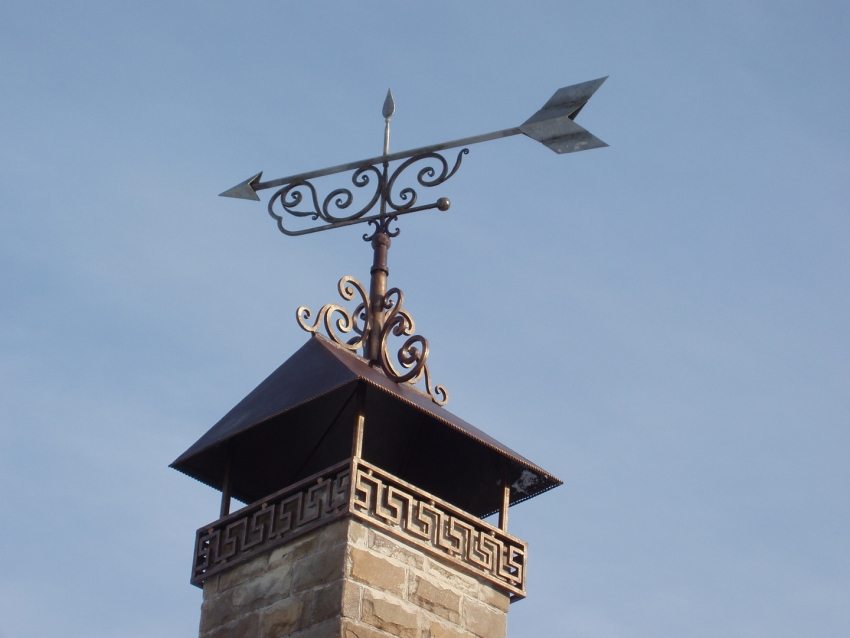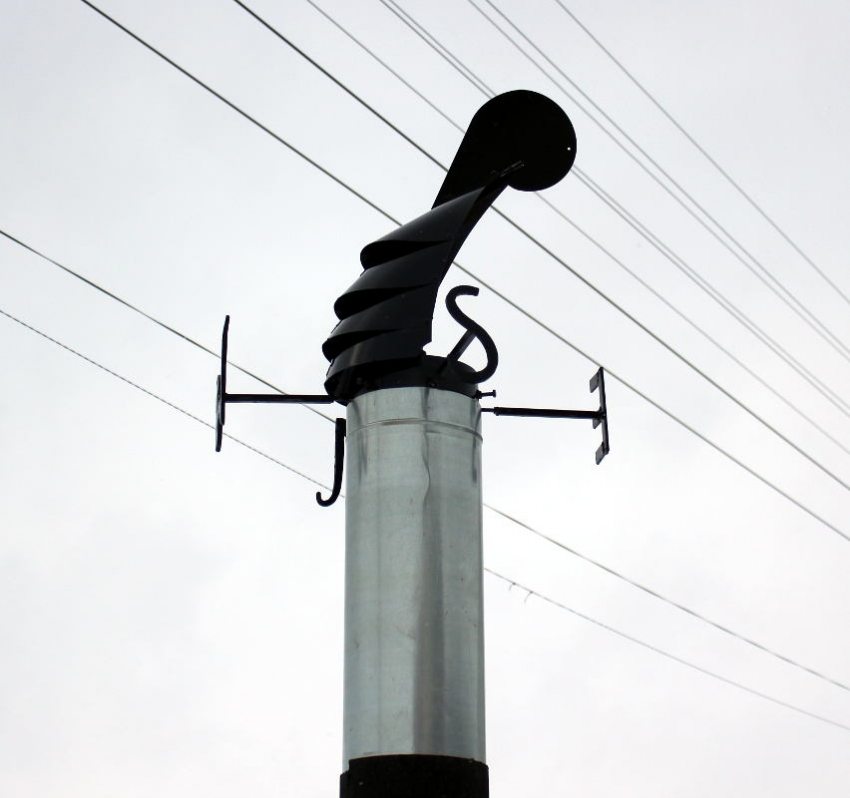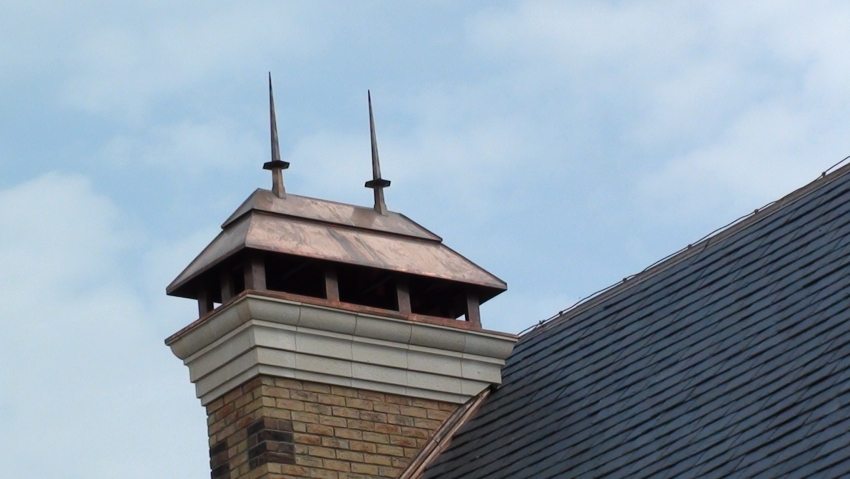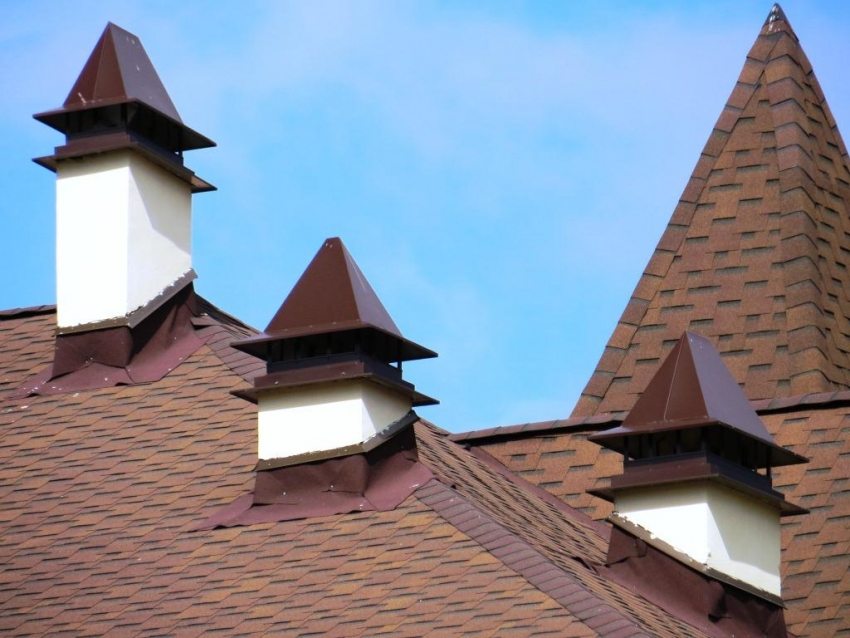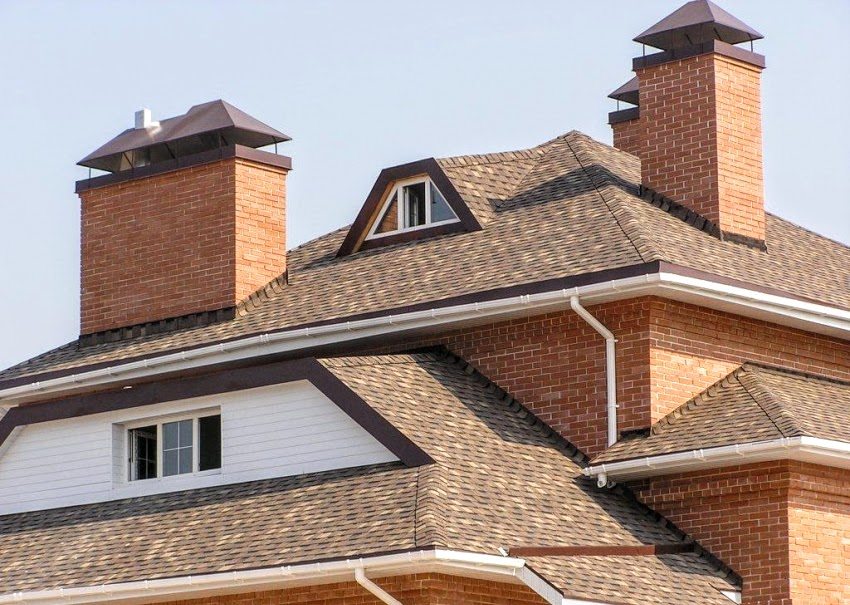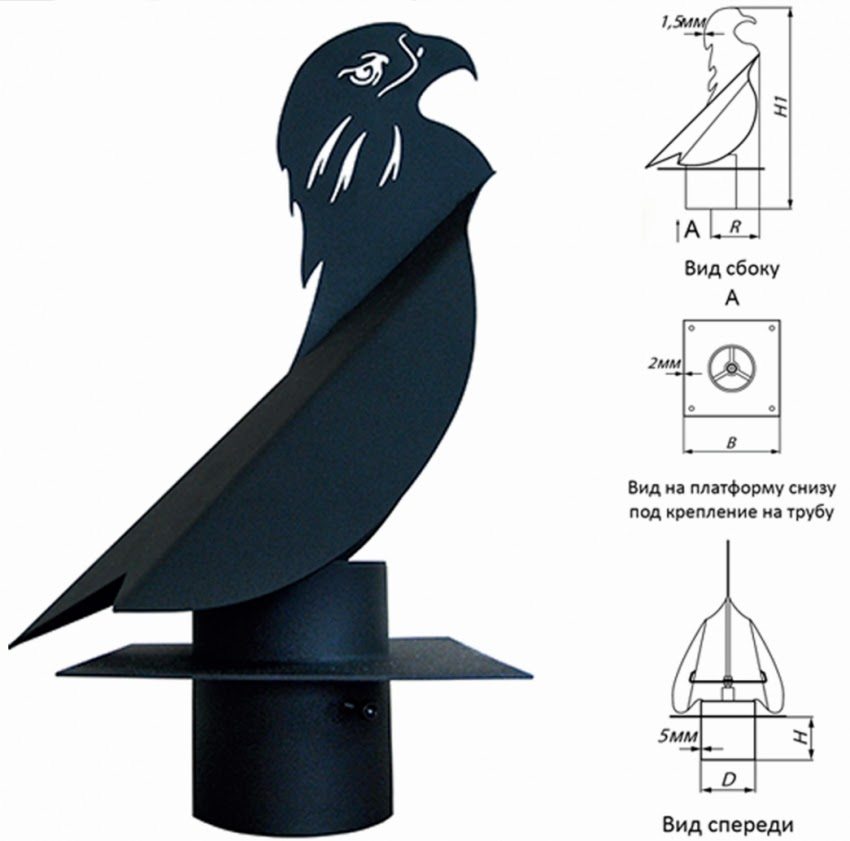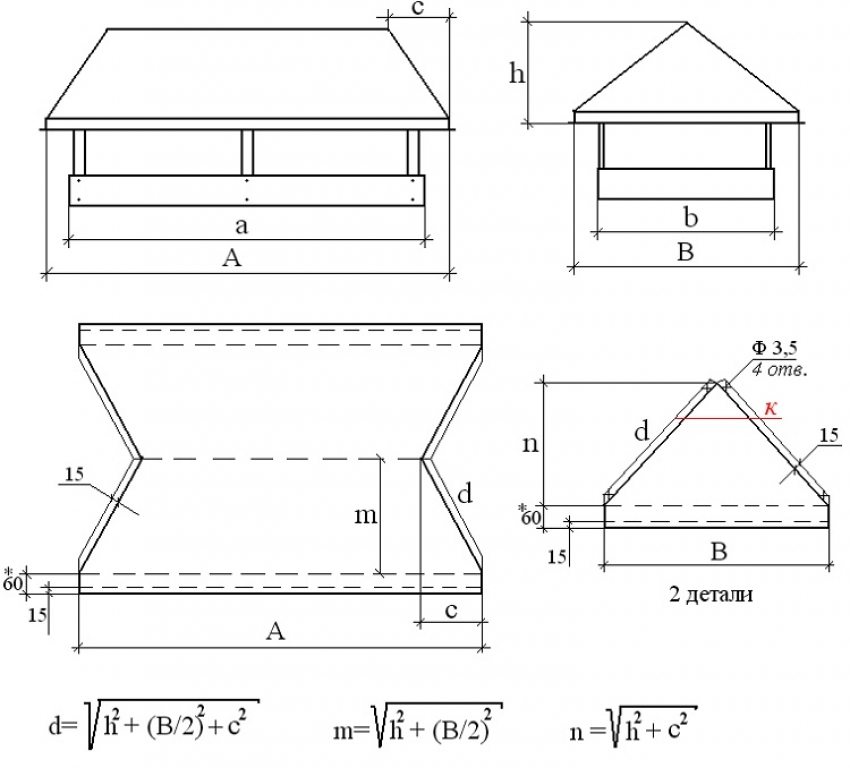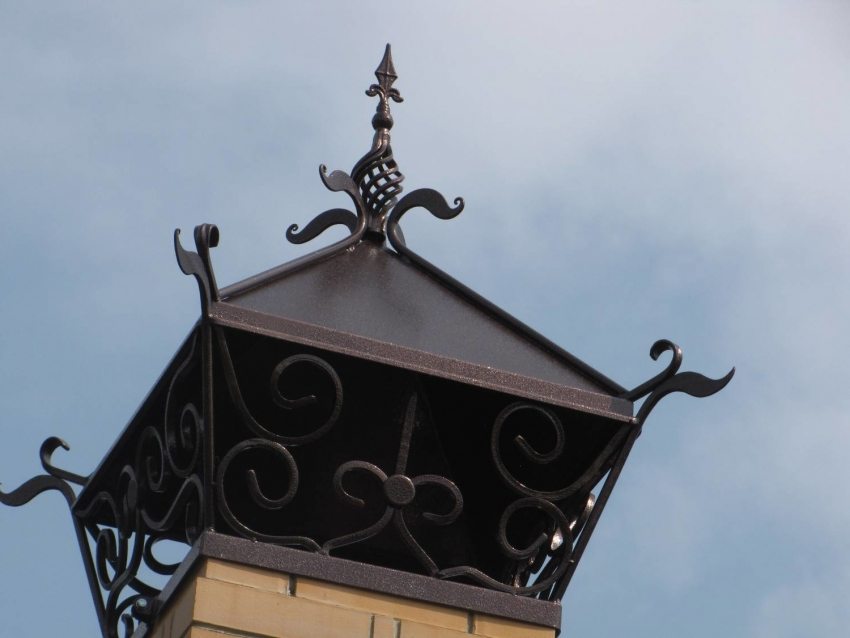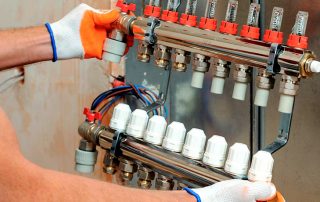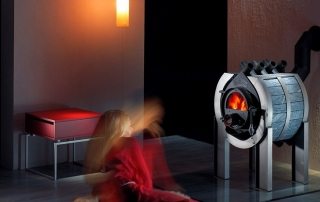You often see beautiful and unusual hoods that house owners place over chimneys. At first glance, it seems that they perform only a decorative role, however, they have functions that are very important when it comes to the safety of the chimney system. Consider why you need a cap on a chimney pipe, by what principle it is selected, what types of structures exist and how to make it yourself.
Content [Hide]
Why do you need a cap on a chimney pipe
Chimney caps are quite common. However, many people are deluded about what they are needed for. It is believed that they protect the pipe from condensation. However, this is not quite true. Evaporation and collection of moisture occurs in the inner part of the pipe and the cap on the chimney pipe (photos on the Internet well demonstrate the principle of its operation) can do little to help here.
Why is a chimney cap really needed? Let's consider several of its main functions:
- protection of the inside of the pipe from the ingress of various foreign objects, dust and debris;
- extending the service life of the pipe by protecting it from precipitation;
- some caps, due to their design, increase the thrust in the pipe and do not allow strong winds to overturn it;
- perform an aesthetic function, giving the pipe an attractive appearance.
It should be admitted that most of the decorative weather vane on the chimney pipe does not at all improve the functional characteristics of the pipe, but, on the contrary, reduce these indicators. An exception to this rule can be considered only attachments with the following design types:
- Wind vane deflectors.
- Nozzles with similar industrial exhaust deflectors.
The first option is much more effective than the second. The semi-cylindrical housing remains movable due to the bearing. It can rotate depending on weather conditions, and like a weather vane's petal it fixes it so that it is constantly turned towards the wind by its back. As a result, the smoke draft is increased due to the generated internal vacuum.
The principle of operation of the second mechanism is as follows: a certain vacuum appears inside the deflector itself, due to the fact that the air flow formed as a result of the wind load bends around the head on the brick chimney pipe.As a result, such an "umbrella" functions differently, depending on the weather conditions: in windy weather, it increases traction, and in calm weather, on the contrary, reduces.
Note! A weighty argument in favor of the first option is that the design chimney on the chimney completely eliminates the danger of wind blowing in, which nevertheless sometimes happens in the case of using the second type of system.
Varieties of chimney caps
In addition to the designs already discussed, there are many others that are also widespread. All of them are united by a common principle of operation and the devices are devices that serve to cover the pipe cut, while leaving a small gap so that the combustion products can go out of the pipe. The shape of the deflector on the chimney pipe can be almost anything, but according to the material of manufacture, they can be divided into several groups:
- from galvanized (roofing) steel;
- made of galvanized metal with polyester powder coating;
- made of stainless steel;
- copper;
- alloyed from titanium and zinc.
If we talk about making a cap with our own hands, then galvanized steel with a thickness of about 0.8 mm is most often used for this. This option is most preferable due to its availability, as well as a fairly long service life (about 20 years). To better understand the structure of such a hood on the chimney, photos and diagrams will serve as an excellent guide for you.
Galvanized steel has only one serious drawback - it quickly loses its original appearance, tarnishes. She is exposed to various external factors that have a negative impact on her. Metal, which additionally has a powder coating, withstands such an effect much better, but such a material is much more expensive.
All other metals retain their appearance for a long time, but their cost is several times higher. However, the price is reflected not only in their appearance, but also in the service life. And although copper also tends to tarnish over time, here we are talking more about decades than years.
How to choose and buy a chimney cap
Finding the right hood is not an easy task. And first of all, here it is worth considering the type of boiler room used and the type of fuel that is used. As an example, consider the fact that only nozzle-like nozzles are suitable for chimneys of gas boilers. They have an open top and are the only ones suitable for use in this case.
Note! The installation of nozzles on pipes that provide chimney from gas boilers is regulated by regulations that prohibit the use of umbrella hoods for this type of chimney.
This prohibition has a completely logical justification: in winter, when the temperature drops below zero, the chimney cap is prone to freezing and can be covered with ice. Over time, ice can cover most of the smoke exit opening, causing it to build up inside the structure. In this case, there is a serious danger to the health of the inhabitants of the house, since the smoke accumulating inside can cause serious poisoning.
Freezing occurs as a result of the formation of condensate, which appears on the surface of cold metal in contact with sufficiently warm combustion products. The situation is different only with solid fuel boilers... Due to the fact that its efficiency almost never exceeds 70-80%, the gas temperature, respectively, remains in the range of 150-250 ° C. It is not dangerous and the use of the nozzle is perfectly acceptable.
Helpful advice! Do not forget that in the case of using solid fuel, the cap will very quickly become covered with black soot.So do not choose too complex embossed models that cannot be cleaned.
What are the chimneys depending on the shape
The variety of forms of modern chimneys is very great. Almost any option can be found here. Consider the most popular of them, which have an unusual geometric shape and are able to decorate any pipe:
- a weather vane of a standard shape: looks like a house with a hipped roof;
- chimney in Art Nouveau style: arranged like a standard one, but additionally has a flat top;
- chimney in European style: has an unusual appearance due to a semicircular top;
- caps with a gable roof, which has four slopes (a very functional design that is well ventilated and at the same time protects the pipe from snow);
- weather vane with weather vane;
- a weather vane equipped with a tear-off lid.
Weathervane with a weather vane differs in that a special damper is located inside the structure, which allows combustion products to calmly exit the chimney even in the most windy weather. And an additional opening cover provides easy access to the flue ducts for cleaning.
Depending on the shape, chimney roofs are divided into the following categories:
- tent;
- gable;
- hipped;
- semi-cylindrical (or vaulted);
- flat;
- steeple-shaped;
- four-pliers.
However, in most cases, this parameter does not affect the functionality of the device and serves solely for aesthetic purposes, providing the chimney with a unique appearance.
Which chimney cap to buy, given the structure of the chimney
Another parameter to be guided by when choosing a hood is the structure of the chimney. The ideal option is considered to be a three-layer structure of modular sandwich panels. In this case, there is simply no need to protect the chimney from precipitation. All moisture that gets inside does not have a negative effect on the pipe, but, on the contrary, is beneficial by cleaning the pipe and collecting in the condensate trap.
If we are talking about a gas boiler, then there are no other options but a nozzle. But if you are dealing with a solid fuel system, then there are many options, although the deflector-vane is considered to be the most popular and functionally justified. Demonstrate the beauty of such chimneys on the chimney photos, in large numbers offered on the Internet.
Many questions arise when it comes to arranging a brick pipe. There are no contraindications here if you are dealing with a solid fuel system. In this case, you can choose any cap you like. But if a gas system is used, then the installation of an umbrella on the chimney pipe in this case is prohibited.
But here a completely natural question arises: what to do with the destructive force of moisture, which eventually gets inside? For this case, special structures are provided that can completely cover the brick base of the pipe.
Diy chimney deflector: drawings and photos
A visor on a chimney pipe with your own hands is not uncommon and many are trying to make it. If you have a sheet of galvanized metal and tools at hand, you can save a lot of money on the purchase and installation of a deflector. To do this, you need the following:
- a drawing set, a fairly long ruler, as well as a tape measure and a marker;
- scissors for metal, fasteners (self-tapping screws with a 15 mm press washer or riveter);
- drill with various drills;
- cap material (galvanized, aluminum or stainless steel) 0.3-0.5 mm thick;
- additional parts of metal for the manufacture of rigid mountings.
In order to make a chimney on a chimney pipe with your own hands, you need to make the appropriate measurements, and then, focusing on the drawing, you can start working.
Using scissors for metal, you can make a chimney weather vane with your own hands. To do this, you need to cut parts of the required size. Then roll up the diffuser body and drill holes in the top and bottom so that after the rivets are secured, a one-piece structure is obtained. Do-it-yourself drawings of the chimney cap will help to assemble correctly.
After that, you can start making the upper cone. You can attach the legs directly to it (usually they need about 6 pieces).
Before you completely assemble the vane on the pipe with your own hands, do not forget to fix the fasteners with which the diffuser will be connected to the lower cone of the structure. The same rivets can be used as fasteners. In order to mount the cap on the pipe, it is best to remove its upper part in order to fit the cap on the pins or pins, and then install the entire structure back.
Helpful advice! Do not neglect the quality of installation of the deflector on the pipe. Being under constant wind load, low-quality fasteners will very soon lose their characteristics and the structure will disintegrate.
Of course, a do-it-yourself fungus on a chimney pipe has no decorative value. Its design is primitive, but it is capable of increasing traction by 20-25%, as well as protecting the roof from accidental sparks. Using the drawings, you can make a cap on the chimney pipe with your own hands quite simply and at the same time spending a minimum of resources.
Chimneys for brick pipes and forged hoods for a chimney: features and prices
On the Internet, you can find many tips on how to make a visor for a chimney with your own hands. However, not everyone wants to bother about this, and many prefer the opportunity to purchase a finished product.
Prices for chimney caps are very diverse, and you can buy a chimney for a chimney pipe starting from 700 rubles. At the same time, the simplest umbrella for a chimney pipe will cost 300-400 rubles.
If you want to buy a chimney deflector that can truly become a roof decoration, you will have to spend a lot of money. Forged chimneys cost from 7,000 rubles and more. The price of a chimney for brick pipes largely depends on its size, material of manufacture, as well as the complexity of forged elements, which are very diverse. You can look at the photos of forged chimneys on specialized sites.
Another rather expensive, but very beautiful option is a chimney weather vane. It comes in a wide variety of shapes and sizes, and at the same time perfectly replaces a simple umbrella with a chimney pipe. Many craftsmen believe that using the drawings, it is quite possible to make a weather vane on the chimney with your own hands. However, this requires a lot of skill. The cost of the finished version will cost from 5,000 rubles.
Depending on your preferences, you can buy a ready-made visor for the chimney pipe or start making your own cap for the chimney. In any case, it will be useful to look at the photos of the chimneys that are on sale in order to get a general idea of their variety and purpose.

